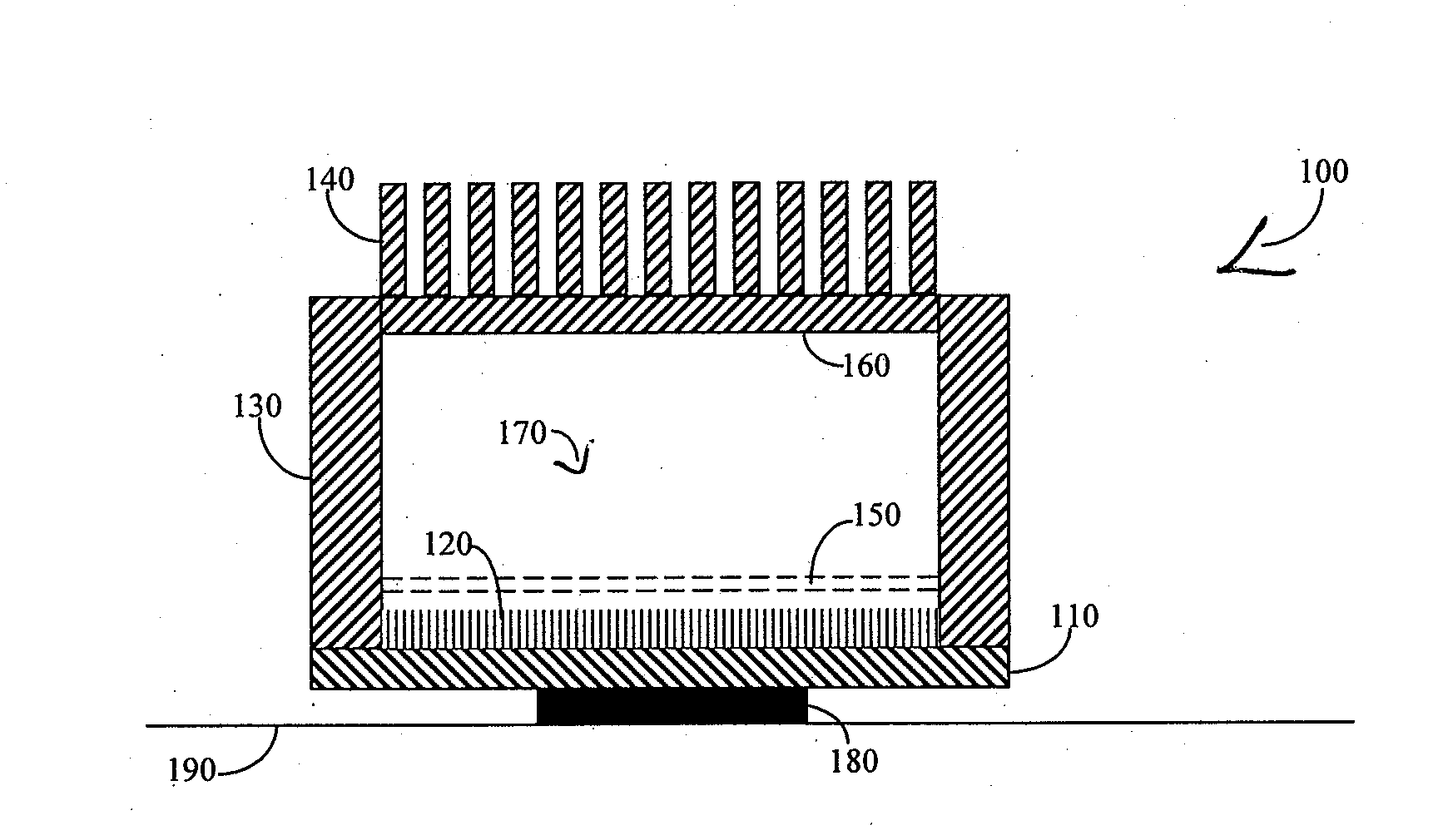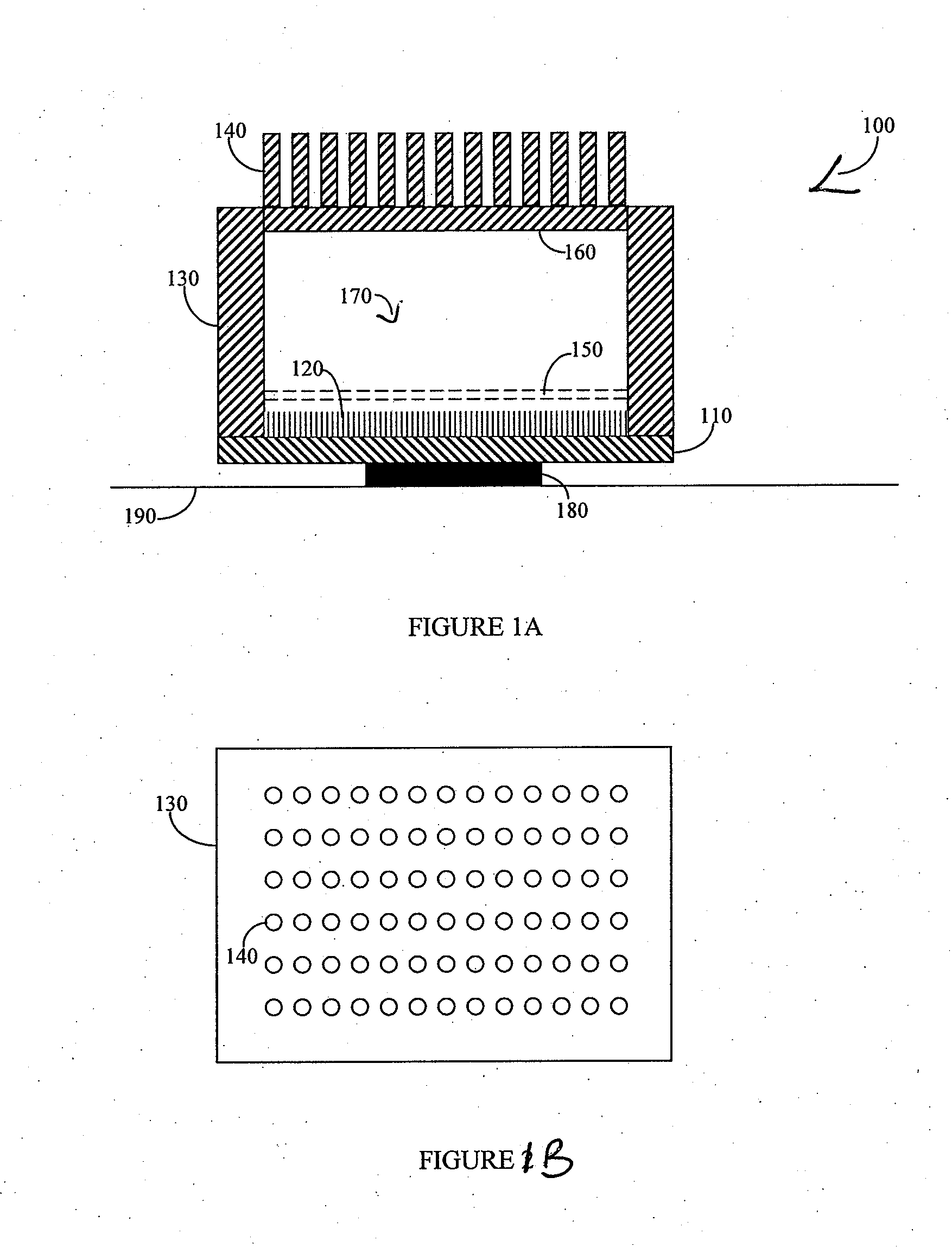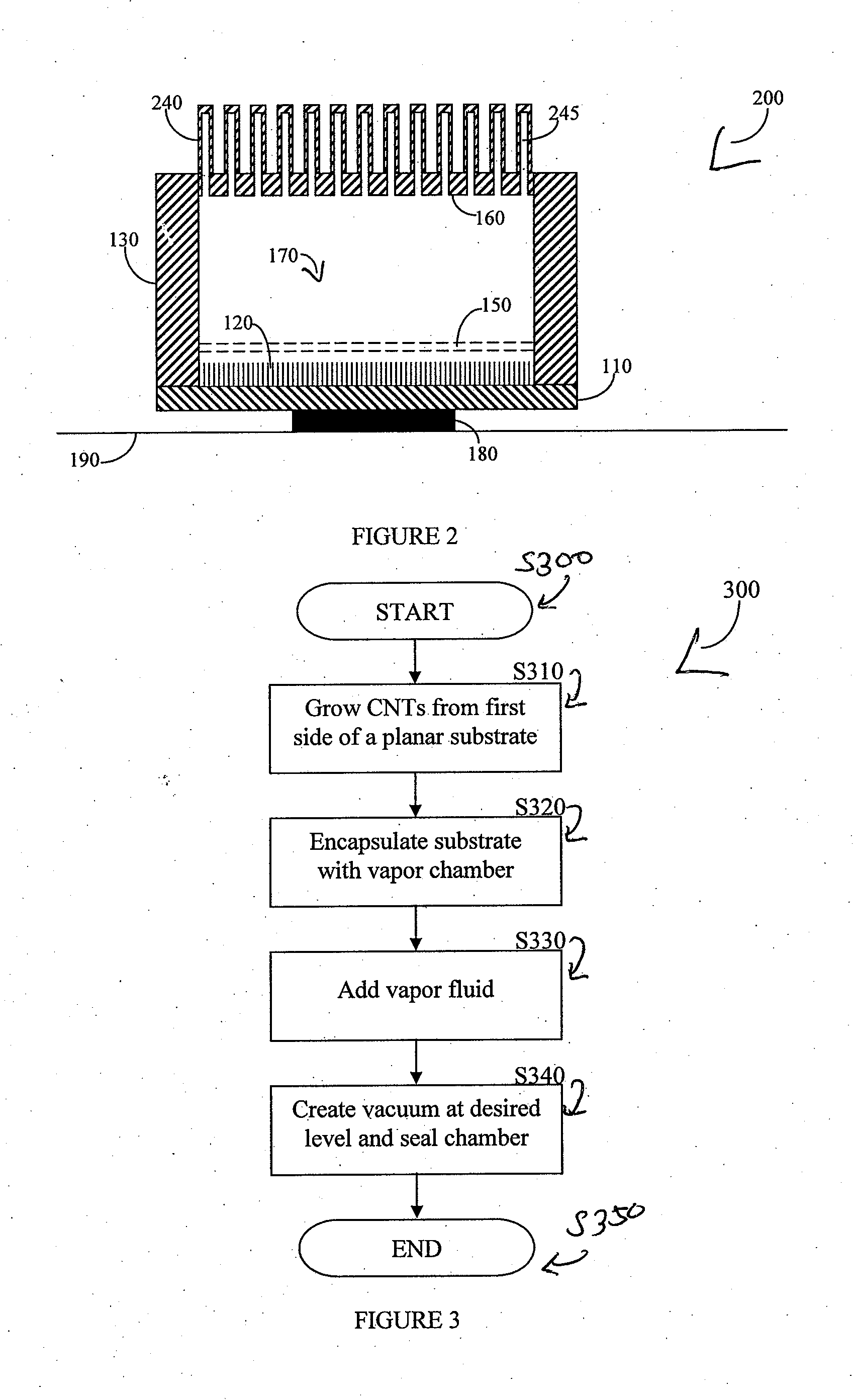Vapor chamber heat sink having a carbon nanotube fluid interface
a carbon nanotube and heat sink technology, applied in the field of heat sinks, can solve the problems of affecting the use of heat sinks, etc., and achieve the effects of improving the use effect, improving the efficiency of heat sinks, and improving the use
- Summary
- Abstract
- Description
- Claims
- Application Information
AI Technical Summary
Problems solved by technology
Method used
Image
Examples
Embodiment Construction
[0017]The presently preferred embodiment of the invention provides an enhanced heat transposer comprised of a vapor chamber. The surface of the vapor chamber that holds the fluid comprises an array of carbon nanotubes (CNTs) that are grown in a way that enables the fluid to come into maximum contact with the CNTs. The fluid evaporates in the sealed vapor chamber when it is in touch with a hot surface. The resulting vapor comes in contact with a hollow pin-fin structure that provides additional surface for vapor cooling and heat transfer. The condensed vapor then drops back to the fluid container, and the cycle continues.
[0018]FIGS. 1A and 1B show a first embodiment of a vapor chamber heat sink 100 according to the invention. The heat sink 100 comprises a substrate 110 and an encapsulating structure 130 that, when attached to the substrate 110 and sealed, forms a vapor chamber 170. A typical substrate thickness is between 2 and 15 millimeters. Prior to sealing, a vapor fluid 150 is a...
PUM
 Login to View More
Login to View More Abstract
Description
Claims
Application Information
 Login to View More
Login to View More - R&D
- Intellectual Property
- Life Sciences
- Materials
- Tech Scout
- Unparalleled Data Quality
- Higher Quality Content
- 60% Fewer Hallucinations
Browse by: Latest US Patents, China's latest patents, Technical Efficacy Thesaurus, Application Domain, Technology Topic, Popular Technical Reports.
© 2025 PatSnap. All rights reserved.Legal|Privacy policy|Modern Slavery Act Transparency Statement|Sitemap|About US| Contact US: help@patsnap.com



